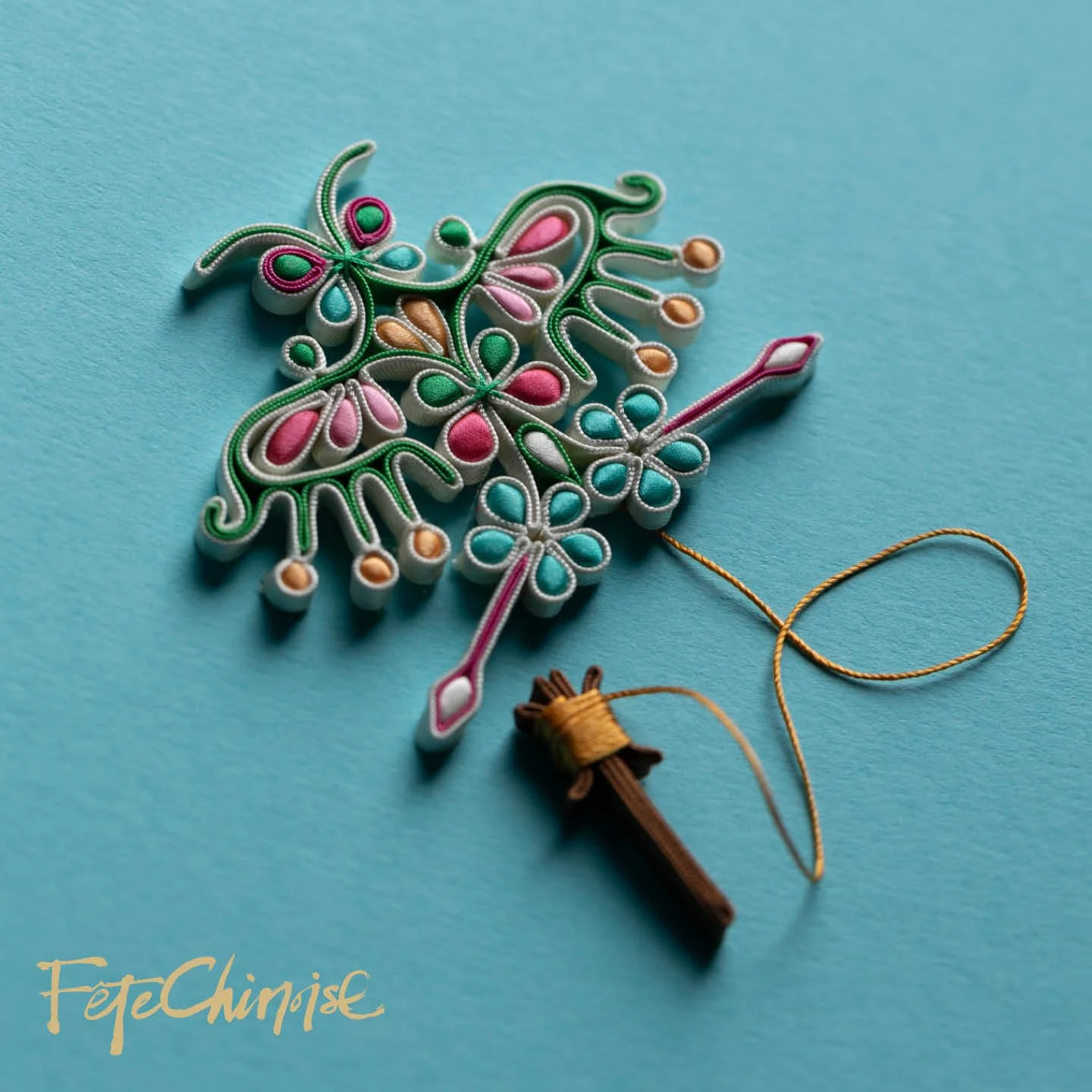A Light Never Goes Out: Honouring Hong Kong's Neon Legacy In Film 電影《燈火闌珊》:向璀璨香港往昔致敬
English 英 & Chinese 中:Maggie Ho
Image courtesy: CHIME Canada, Entertaining Power
As featured in 2024 Fête Chinoise Design Annual
In 2022, the film A Light Never Goes Out rekindled our fascination with the radiant neon lights of Hong Kong, offering a fresh glimpse into the artistry and craftsmanship behind these iconic signs. The film’s nostalgic portrayal has sparked renewed interest in the cultural and historical significance of neon lights, leading the 2024 Design Annual to feature two compelling stories on this luminous subject.
In Part 1 of our exploration, we delve into how the film bridges the gap between the modern era and the past, illuminating the evolution of neon lights and their place in Hong Kong’s vibrant history. Stay tuned for Part 2, where we will further uncover the efforts to preserve and sustain this important cultural craft in Hong Kong.
Director Anastasia Tsang's debut feature, A Light Never Goes Out, brilliantly illuminates the enduring legacy of Hong Kong's neon-lit streets. Her adept direction guides the narrative, which explores themes of loss, heritage, and resilience amid a city in transition.
The 2022 film tells the story of Heung, a widow on a mission to preserve her late husband's legacy as a traditional neon sign maker. Her noble pursuit is challenged by stringent building regulations and the rising dominance of modern LED signage, which threaten to relegate neon craftsmanship to obscurity. In the wake of her husband’s death, she mentors an apprentice, Leo, in the craft of neon sign-making and helps him to navigate a path through the minefield of modernization. Meanwhile, Prism, Heung’s daughter, faces obstacles of her own as she endeavours to preserve her family's heritage as neon sign makers when their craft is in threat of extinction.
霓虹燈代表着昔日香港風華正茂的歲月,Keith Macgregor 、 Ridley Scott、王家衞、杜可風等無數中外知名攝影師、電影導演均愛在作品中捕捉燈紅酒綠、繁喧極致的城市光影。 電影《燈火闌珊》早前在北美地區上映,透過大熒幕,把香港璀璨一時的霓虹燈影再度重現觀眾眼前。
As the characters confront the complexities of their lives against the backdrop of the city's evolving neon-lit streets, they emerge as a powerful metaphor for the uncertain future of Hong Kong neon during a period of rapid urban transformation.
Featuring performances by acclaimed Hong Kong actors Simon Yam and Sylvia Chang, the film offers glimpses of a Hong Kong neon workshop, where the craft of neon sign-making comes to life. Yam, known for his versatile roles in Hong Kong cinema, portrays a skilled artisan, embodying the ingenuity and tenacity of the original Hong Kong craftsmen. Chang, a renowned actress and filmmaker, brings depth and authenticity to her role as the widow Heung, adding emotional resonance to the workshop scenes. Together, they vividly depict the process of creating neon as symbols of the city, from the delicate bending of glass tubes to the mesmerizing glow of neon lights, immersing viewers in the history and artistry of Hong Kong's neon culture.
醉人燈光
導演曾憲寧在其個人facebook 寫道:「最初是想要為電影找一個能代表香港的視覺主題,想到霓虹是因一次坐車看到半熄霓虹而靈光一閃。 但及後在資料搜集的過程中,發覺了解越多,對她越著迷。 」
Sponsored by Cadillac Canada
的確,八、九十年代,滿街密的霓虹招牌是外國遊客對於香港這顆「東方之珠」的第一印象,更是無數旅客津津樂道的城市風貌。 飛機降落至啟德機場前,遊客在飛機上先被燈火閃閃的壯麗夜景感到驚歎;於彌敦道、駱克道走一轉,頭頂上的巨型招牌又多又大又亮,完全是魅力與活力迫人的展現。
That history is also re-created through the overall visual design of the film. Tsang references iconic neon signage such as White Flower Oil, Leung So Kee Umbrella, Koon Nam Wah Bridal, and Pak Chun Sweet Vinegar, meticulously chosen by the creative team following thorough historical scrutiny. The end credits also connect the audience with history by detailing the careers of real-life artisans behind the city’s most famous billboards.
Additionally, Tsang ingeniously incorporates archival footage of old Hong Kong as cinematic interludes within her film, seamlessly blending the vibrant neon signs hanging over the busy streets with shots of the same streets as they appear today, devoid of life.
工業起飛
《燈火闌珊》中,任達華飾演的師傅阿鑣,身穿白色小背心在小工場中默默耕耘,演活了舊香港手工業人才的獨特之處:身處狹小空間,依然能發揮無限可能。 彈丸般的工場,是化學科學的實驗室,也是美學設計的創意基地。 戲中任達華與張艾嘉二人一邊燒光管,一邊談情的場景,當然是刻意營造的浪漫情景,卻也寫實地反映當時社會都是家庭式小規模作業。
二戰後,香港經濟快速復甦,普羅大眾的購買力迅速増長,各行各業為了招攬生意,爭相造出大型霓虹招牌。 電影中所提及的多個霓虹招牌:白花油、梁蘇記、冠南華、八珍甜醋等,都是由創作團隊經過歷史考察後挑選出來的經典之作。 例如那個被形容為「犀非利」的「樂聲牌」招牌,建於1970年,由4000多支霓虹光管製成,曾被列入健力士世界紀錄大全,為當時全球最大型的霓虹招牌之一。
These juxtapositions serve as a poignant reminder of the passage of time and the impermanence of tradition in the face of modernization. By weaving together past and present, Tsang invites viewers to reflect on the evolving landscape of Hong Kong and the cultural heritage embodied by its neon lights.
While A Light Never Goes Out is a cinematic experience, it's also a visual and emotional journey that invites audiences to reflect on the significance of preserving cultural heritage in a rapidly changing world. Through its captivating narrative and poignant portrayals, the film captures the essence of Hong Kong's neon culture and underscores the importance of cherishing and safeguarding it for generations to come.
有燈,就有人
電影中有句對白:「霓虹燈是用燈去寫書法,是用心去寫。 」,道出了當時香港霓虹工藝的精妙之處。 在未有電腦繪圖及數碼儀器輔助的年代,霓虹師博手持燈管在明火下燃燒,細心控制熱度,屈曲燈管造字。 另外,又必須熟悉不同氣體的顏色特性,混入不同顏色、份量的螢光粉,造出顏色不一的燈管,色澤絢麗而不刺眼,絕非今日常見的LED燈可比。
昔日風光一時的霓虹燈飾因為種種原因: LED 燈出現、老店結業及違建條例而被拆。 對此,導演曾憲寧不禁問道:「在『失去』當前,我們是否只能無力?」電影亦利用寡婦美香、徒弟李登龍及女兒彩虹,三人面對親人離去的不同態度,反思有關「逝去」與「傳承」的議題。 不同世代之間,對於未來、對於過去,都有不同看法。 當熄燈已是無法改變的現實,也許我們只能想辦法好好保存回憶。 燈熄了,情永在。
A Light Never Goes Out is now available for online streaming in Canada at TheChime.ca. For more behind-the-scenes content, visit CHIME Canada YouTube channel.
觀眾現可於 TheChime.ca觀賞電影《燈火闌珊》及在CHIME Canada YouTube Channel觀賞電影訪問及製作特輯。
























In Chinese culinary tradition, the Longevity Peach Bun (or Shoutao), holds a special place. Often found at birthday banquets for the elderly, this delightful treat is more than just a delicious dessert—it is a symbol of health, prosperity, and a long life. With its unique appearance and cultural significance, the symbolic bun continues to be a staple at celebrations as traditions are passed down generations of families in Asia and in diasporas around the world.